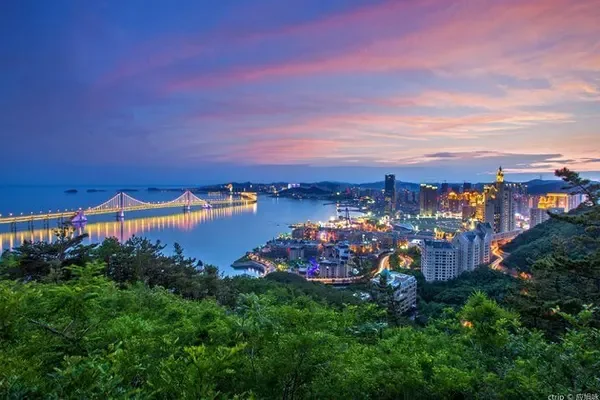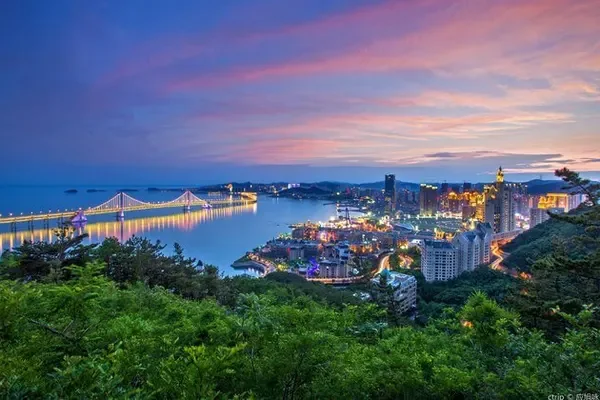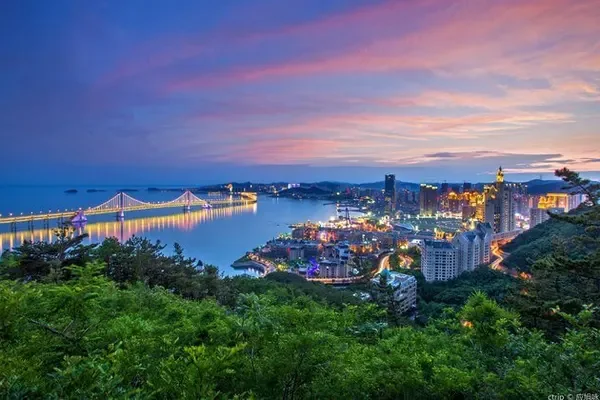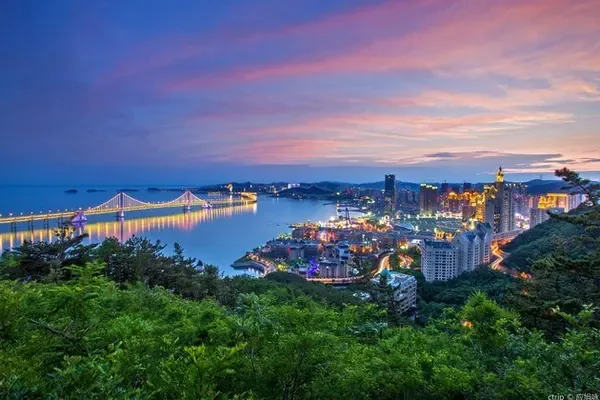Journey all the way west
Every time I travel, I think it’s a trip that just goes away. This time, my destination is the most beautiful and vast place in the motherland: Xinjiang.

▲There is a vast virgin forest here.

▲There are clear plateau lakes here.

▲There are magnificent snow-capped mountains here.

▲There is a vast prairie here.

▲ Here is the desolate Gobi Desert.

▲ There are ancient cultural sites here.

▲It is very fortunate that every time I travel, there will be like-minded friends walking along the way.
This journey has more unforgettable memories.
Xinjiang has everything within your imagination, and everything beyond your imagination!
I just want to travel through the northern and southern borders and dream a dream of the Western Regions that I don't want to wake up from.
Blue and white Sailimu Lake
Arriving in Urumqi, it was already ten o'clock in the evening. After we checked into the hotel, we began to look forward to tomorrow's itinerary.
Our first stop is to Sailimu Lake, passing through the Dushanzi Grand Canyon along the way.
Xinjiang is generally divided into southern Xinjiang and northern Xinjiang. The most common travel routes are the northern, western, and eastern routes, which are collectively referred to as northern Xinjiang.
The main attractions are concentrated in northern Xinjiang, which is also the most popular route for tourists.


Standing in front of Dushanzi Canyon, I was shocked by the spectacular landform in front of me.
Dushanzi Grand Canyon is located 28 kilometers south of Dushanzi City, which was formed by years of erosion by snow and rain in Tianshan Mountains.

The canyon is nearly north-south. The Kuitun River flows through the Dushanzi Grand Canyon. The valley wall is steep and the cliffs are steep. Stunning and strange landscape.




Standing on the plank road is also the best place to overlook the Grand Canyon. The Dushanzi Grand Canyon in April may not be the most beautiful time, but it is enough to shock my heart. After a short rest, we continued to board the car and head to Sailimu Lake today.

All the way to the west, after several hours of driving, we finally arrived at today's destination Sailimu Lake in the afternoon. Sailimu Lake is known as "the first pool in Tianshan Mountain". Here is one of the "four beauties" in the lake. If you want to choose the most beautiful time of Sailimu Lake in a day, then the Sailimu Lake in the evening The lake would definitely be my first choice.


In Sailimu Lake in May, the snow water on the icebergs has not yet melted, and the lake water has regained its vitality from the frozen state. The snow-capped mountains and clouds are reflected on the shimmering lake surface, which is really a picture scroll.


There is a legend about Sailimu Lake. A long time ago, there was a beautiful grassland with blooming flowers. On the grassland, there is a girl named Qiedan and a Mongolian young man named Xue Deke who love each other deeply, but the vicious devil is greedy for the beauty of Qiedan and captures Qiedan into the magic palace. Waiting for an opportunity to escape from the magic palace, under the pursuit of the devils, Cedan was forced to jump into a deep pool. When Xue Deke came to rescue his lover after fighting bravely, he found that Qiedan was dead, and in great grief, he also jumped into the pool and died in love. Sincere love and tears of grief turned into Sailimu Lake.

Sailimu Lake is backed by snow-capped mountains, and the lake is surrounded by vast grasslands. The lake is clear and blue. In June and July every year, the grasslands beside the lake are full of wild flowers of various colors, which should reflect the blue lake water under the snow-capped mountains. It is not to be missed. The grand scene.


We came a bit early this time in May, the snow in the snowy mountains has not melted, and the green grass by the lake has not yet grown. The best shooting angle to come to Sailimu Lake is in the east of the lake, facing the year-round The snow-capped mountains can just take pictures of the beautiful scenery of the lake below the snow-capped mountains.

The time difference in Xinjiang is actually two hours later than Beijing time. The sunset here will only start at 8 o'clock, so arriving at Sailimu Lake in the afternoon is also the time when the light is the most beautiful.


Strolling along the banks of Sailimu Lake, because it is not the most prosperous tourist season, there are very few tourists. Even the tourists in twos and threes are local residents who come for a walk. The children are picking up stones by the lake. Maybe there will be a little surprise under the stones. shell.


There is no shuttle bus in the scenic area of Sailimu Lake, so private cars can drive in, and chartered cars are the best way to play in Sailimu Lake. Driving all the way to chase the sunset, this is also our first impression when we first met Sailimu Lake.


Before I came to Xinjiang, I knew that Xinjiang had a vast territory, and a lot of time was spent in the car, but when you come here and see the beautiful scenery along the way, you will feel that the time you spend is worth it.
The lively Horgos Port
The place to go today is the Horgos Port, which was an important station on the North Road of the Ancient Silk Road as far back as the Sui and Tang Dynasties.
If you want to go to the border port and need to bring your passport, you can go directly through La, and you don't need to pay another 15 yuan to apply for a visa.
Before going to Horgos, we have to pass a very famous bridge, the Guozigou Bridge.


Guozigou is the natural gateway of the Yili area. It is a famous canyon tunnel that goes north to Sailimu Lake and south to the Ili River Valley. The Guozigou is 28 kilometers long and the terrain is dangerous. During Genghis Khan’s western expedition, he began to dig mountain passages and built 48 bridges. , It can be seen that the road is steep.


When we drive along the Wuyi Highway, we will pass through Guozigou. If we go from east to west, we will first pass through the famous Sailimu Lake, and then pass through a several-kilometer-long mountain tunnel to reach Guozigou. The bridge is powerful yet elegant, with a spectacular S-bend that circles the valley. At this time, open the windows to enjoy the beautiful scenery.


Entering Yili, there are many pine trees and various wild flowers and fruit trees in the mountains. In summer, cattle and sheep patrol the mountains, and herdsmen and yurts can be seen everywhere. There are also some beekeepers scattered in the mountains. The pure wildflower honey produced here!



When I came to Horgos Port, I forgot to bring my passport, so I waited in line with my friends for more than half an hour to get the entry-exit pass. The pass is 15 yuan a time, and it can also be paid by WeChat, which is quite convenient.


The opposite port of Khorgos Port is Kazakhstan Khorgos Port, which is a first-class trading port opened by China and Kazakhstan. You can pass through the port to the duty-free zone with a pass.



TIPS: Cigarettes in the duty-free area are very cheap, and the friends who pass by buy a lot of them back, and no more than 2 cigarettes per person. You can take a bus to the shopping center at the port, and the bus fare is 2 yuan per trip.
Visit Yining Uighur Folk Village
When you come to Yining, you must visit Kazanqi Folk Village. Kazanqi was originally a settlement for Uighurs who made pots. Now when you walk here, all you see are the faces of Uyghurs.

The buildings in the streets and alleys of the folk village are mostly blue, sky blue, and extremely pure. The bright architectural colors will bring visual impact to people, but the blue of Kazanqi is a kind of blue that can make people feel quiet.



Wooden doors with patterns of various colors always attract my camera.


If you want to understand the way of life of the Uighurs today, then coming here will indeed be a rewarding travel experience. Early morning or evening is the best time to visit. At this time, there are few tourists, so you can swim in this lane by yourself. A kind old grandma came out of the doorway, looked at our camera and smiled with us.


Kazanqi has many carriages for people. The width of the carriage is long, and one horse can carry 6-8 people. The horse-drawn carriage is also a means of transportation for the locals, and the exotic pictures will always surprise you here.


The naan, which was bigger than my face, was so real that we couldn't finish it all the way through.


You can try local delicacies such as noodles with noodles and mutton fried buns.
Kalajun Prairie in the sunset
The Kalajun Prairie is located in the Tekes County of the Ili River Valley in Xinjiang. It is the transition zone from the West Tianshan Mountains to the Ili River Valley. Kalajun is a Kazakh language. Kara means dark, rich and vast. As the name suggests, the Kalajun Prairie means the vast grassland.


Surrounded by snow-capped mountains that do not melt all year round, an aerial meadow with an altitude of more than 2,000 meters surrounds the Kalajun Prairie, which transitions directly from winter to summer, ushering in the most beautiful season with green grass and cattle and sheep everywhere.


Looking around, there are vast snow-capped mountains in the distance, green grass nearby, the fresh fragrance of flowers and plants in the air, and beautiful scenery as far as the eye can see.

In the endless natural prairie, smelling the fragrance of various pastures and wild flowers, seeing lambs, calves, and horses neighing happily, and experiencing the real wind blowing grass and seeing cattle and sheep.



It is very big here, and it looks different from every angle. It seems to have walked into a small town in Europe in another direction, and the huts with different distances make this place full of exotic feelings.


The endless natural prairie, like a wonderful green carpet, has been spread to the foot of the snow-capped mountains, which is really refreshing.


Standing here to take pictures is definitely a visual enjoyment. On this vast prairie, you can really feel the magic of nature.

On the way back from the Kalajun Scenic Area to the hotel where I stayed today, I saw the words Bagua City from a distance, and quickly pressed my shutter. The legendary city of Bagua City was designed by "Changchun real person" Qiu Chuji.
The stunning Nalati Grassland
Today's itinerary is Bayinbulak. I originally planned to see the paradise surrounded by snow-capped mountains, the Kaidu River with "nine curves and eighteen bends", and the elegant and charming Swan Lake. I ended up walking to the door. At that time, we were told that the road was closed, so we had to move to the Nalati Grassland.


The Nalati Grassland is one of the four major river valley grasslands in the world, and its terrain slopes from southeast to northwest. The wilderness is densely covered with mountain springs, streams are like nets, rivers are criss-crossed, and forests are luxuriant. It is known as the grassland in the air.

At this time in Nalati, the snow-capped mountains began to melt, and patches of wild flowers began to compete to bloom, embellishing the entire grassland with splendor.

Against the backdrop of the blue sky, white clouds, and snow-capped mountains, the herds of animals move in the clouds, and a beautiful picture comes into view.




After we entered the scenic spot, we took a sightseeing car and drove along this road to the depths of the grassland.






The more you go to the sparsely populated place, the more beautiful the scenery is, and the wild flowers all over the ground are extremely gorgeous. The snow-capped mountains in the distance, and the flowers and plants nearby appear in the same picture, but they are so beautiful. The same frame of winter and summer, I like it very much!


On the hills, wild flowers bloom all over the hillside, adding a new vitality to the grassland. When the breeze blows across the grassland, the white clouds and the blue sky like a child's painting set off the tenderness of the snow-capped mountains, and you can't help but be intoxicated in its embrace.



Finally, when I met the sunset on the grassland, I felt a burst of joy. It really deserves to be called the grassland in the air. The unplanned Nalati grassland surprised the audience!
The last Robe village


From northern Xinjiang to southern Xinjiang, the road is still picturesque.


A meadow full of flowers on the uphill side of the road.


The Duku Highway is still closed. Although it is not possible to visit in depth, it is another scene from a distance. The mountain I passed by on the way went from 150 to 3000 above sea level, and slight tinnitus would inevitably occur during the ascent.
The snow on the top of the mountain has not yet melted, and Haizi on the high mountain has become a glacier. It is true that you can harvest different scenery everywhere you go.

It was already six or seven o'clock in the afternoon when we arrived in Yuli County. From a distance, we saw the big characters "Abudan" hanging on the towering wooden tower. This is the entrance to the village of the Rob people.


This is a small village called "Desert Taoyuan". It is located 35 kilometers southwest of Yuli County, Xinjiang, and 85 kilometers south of Korla City. Although there are only about 20 households in the village, it is one of the largest villages of the Luobu people. one.
The Rob people are one of the oldest ethnic groups in Xinjiang, also known as the "last Rob people" in the desert.

Although this village is not big, it covers the Taklamakan Desert, wandering lakes, Tarim River, primitive Populus euphratica forest and grasslands. They fished and hunted by Haizi in the desert, maintaining primitive customs and habits, and their life was full of mystery.



This river is the Tarim River, and the mutual nesting of the Tarim River and the desert has created a different kind of scenery here. It has both the roughness of the Northwest and the elegance of the south of the Yangtze River. Various elements such as deserts, lakes, and Populus euphratica vegetation form space-time tunnels, making people feel that time has gone back a thousand years.


It is said that the autumn here is a more amazing mysterious paradise than Ejina, and I look forward to meeting the amazing scenery next time.
The magical karez

This stop is Karez Paradise in Turpan. Speaking of Turpan, due to its unique climate characteristics, it is rich in grapes, watermelons and other fruits, and is well-known as the "Grape City". I thought I could have a feast of grapes, but it’s a pity that the grapes are only blooming now, and the dream of eating grapes is shattered, a burst of sadness~


Looking at the layers of grape racks, I thought that the ripening period of the grapes must be spectacular.

I didn't expect grapes to bloom so beautifully.

Karez is one of the three ancient cultural projects comparable to the Great Wall and the Grand Canal. It is the mother river of Turpan and the source of life of Huozhou. Karez, called Kanerzi in Uighur, originally meant an underground waterway. It is the crystallization of the labor wisdom of the ancient Turpan people.
Because Karez water is melted snow water from the Tianshan Mountains and infiltrates into the ground, it is non-polluting natural water, rich in minerals, and regular drinking can make people beautiful and long-lived. Karez wells are excavated underground and are not easy to evaporate. Bottomless, sweet and refreshing.

Coming out of Karez Paradise, I found a very distinctive building with a special flavor!

On the way, we saw vendors selling mulberries along the road. I have only eaten black mulberries. I saw white mulberries. I was really ignorant. White mulberries are really super sweet and delicious! It's such a big basket for 10 yuan~
Flame Mountain passing by in a hurry

Speaking of the legend of the Flame Mountain, everyone must be familiar with it. The plot of the Flame Mountain in Journey to the West is still vivid, but in real life, the Flame Mountain is located in Turpan, Xinjiang, my country.
It is said that the Flaming Mountain was stepped out by Sun Dasheng. The small flames in the Eight Diagrams furnace of the Taishang Laojun fell to the mortal dust and turned into the Flaming Mountain. The myth describes this place: "Eight hundred miles of flames, no grass grows around. There is no spring, no autumn, and the four seasons hot" .

Legends are of course just legends. In fact, the magical climate of Huoyan Mountain is closely related to the unique geographical conditions here.
Even in April, we already feel the heat of the land.

Standing at the foot of the desolate and scorching Flame Mountain, looking at the red, barren, yellow sand-filled sky, the scenery is very spectacular. I have to admire the uncanny workmanship and ingenuity of nature.

Huoyanshan is the hottest place in China. The highest temperature in summer is as high as 47.8 degrees Celsius, and the highest surface temperature is as high as 70 degrees Celsius. Therefore, there is another interesting little game here, that is, baked eggs in sand nest. If you are interested, come here You can try it here.

Although today's time is tight, a quick glance is enough to feel his heat and magnificence!

We crossed most of Xinjiang in seven days, although it was only a short seven days that we could not appreciate all of Xinjiang.
But this first impression has been deeply etched in my mind.
May I meet you again in the next best time.
All the way to the west, I have a dream of the Western Regions that I don't want to wake up.
dry goods sharing
【About the itinerary】
This time we set off from April 29th to May 7th, and the itinerary is 7 days. Because Xinjiang is too big, the tour route is basically divided into northern Xinjiang and southern Xinjiang. Our trip was originally more than ten days, because the small The partner's holiday problem was finally compressed into 7 days. So this journey is still very long every day, almost across the north and south of Xinjiang. It is recommended that friends can spare some time and play relatively loosely.
DAY1 Chengdu - Urumqi Accommodation
DAY2 Urumqi - Dushanzi Grand Canyon - Sailimu Lake - Yining City Accommodation
DAY3 Sailimu Lake-Guozigou Bridge-Horgos-Yining City Accommodation
DAY4 Kaqizan Folk Custom Garden - Kalajun Prairie - Tekes Accommodation
DAY5 Tekes - Nalati Grassland Bayinbulak - Accommodation
DAY6 Bayinbulak- Yuli County Accommodation
DAY7 Luobu village - Turpan accommodation
DAY8 Karez - Flame Mountain - Urumqi
DAY9 Urumu - Chengdu
【About traffic】
We booked the China Southern Airlines special ticket more than a month in advance.
The total cost of Chengdu to and from Urumqi is about 1500.
Since it is during the May Day holiday, I am very satisfied with the air ticket price.
Once the air ticket is settled, it is the problem of travel and transportation in Xinjiang.
Since the area of Xinjiang is too large, public transportation is hardly displayed, so we decided to choose Longqing Outdoor recommended by our friends.
Since many of the small partners traveling together are going to Xinjiang for the first time, we have no idea about the route of Xinjiang, so we contacted the team master to help us plan the route for this time. The driver of the team is really super nice. Not only is the driving skill good, the car is also equipped with various artifacts for us to pass the time, such as car microphones and other artifacts. The friends laughed and laughed along the way, completely forgetting the fatigue of the journey.
The whole itinerary, including accommodation, was also arranged for us in advance by the masters. The local 3-star standard, we are also very satisfied with the accommodation~
I highly recommend this team master, and interested friends can private message me if they want to contact.
【About safety】
Before departure, what my friends are most worried about is whether Xinjiang is safe? After returning this time, I can tell you with certainty that Xinjiang is very safe.
Along the way, regardless of cities or towns, gas stations, hotels, or toll booths, there will be security police officers checking ID cards one by one, so ID cards need to be carried with you.
【About others】
jQuery171035910104783618246_1532313587076 The network in Xinjiang is only 3G, and there is no signal in many places on the road, so we are all shouting in the car to pass the time, hahaha.
?? The temperature difference in Xinjiang is really felt this time. The temperature difference between morning and evening is very large, so you must remember to bring a thick coat.
?? The ultraviolet rays in Xinjiang are also very strong, so you can't stop using sunscreen.
?? Although Beijing time is used in the Yili area of Xinjiang, there is actually a time difference. The time difference is 2 hours. Our mobile phone automatically changes to the local time difference. For example, Beijing time is 8 o'clock, and the local time is only 6 o'clock. Be optimistic Time, make no mistake.
Think of so much first, if you have any other questions, you can leave a message and ask me.



